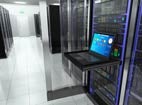As data center infrastructure becomes more modular and scalable, an interesting question is starting to surface: Should they remain tethered to the power grid or switch to full, or at least primary, on-site power generation?
It seems to be a classic tug-of-war between two opposing forces: budget constraints vs. stability/reliability. But as technology advances, it seems that many of the traditional concerns over localized power could fall away.
For one thing, power companies are starting to take a hard look at the needs of large consumers and are concluding that on-site power is both lucrative and beneficial. GE, for example, recently earmarked $1.4 billion for the development of gas-powered engines and turbines. The Jakarta-based operation is designed to tap into the “distributed power market,” which GE estimates will grow some 40 percent faster than overall global electricity demand by 2020. The movement, which encompasses everything from data centers and large manufacturing facilities to small nations and geographically remote regions, seeks to drive greater energy efficiency by placing generating equipment closer to the devices they power, cutting out much of the infrastructure and energy-sapping conversion/conditioning equipment of current grid architectures.
In some cases, it seems that data infrastructure will be the secondary use for what will become regional power sources. Delaware officials are current debating the wisdom of building a power plant at a site owned by colo provider The Data Centers (TDC). The plant would use natural gas to produce up to 279 MW and would capture waste heat to power generators that would both heat and cool the facility. TDC maintains that providing its own power generation equipment is cheaper and more reliable than buying energy off the grid and will provide a net decrease in the emission of nitrogen, sulfur, carbon dioxide and other pollutants.
On-site power generation is also expected to drive demand for stationary fuel cell technology. According to WinterGreen Research, the market is expected to jump more than 10-fold to $14.3 billion by the end of the decade. Recent developments in both materials and system designs, namely the switch from high-cost platinum catalysts to less expensive options like hydrogen, are poised to make the technology more efficient and affordable, and perhaps drive the usage of renewable energy sources like wind and solar.
Still, it might not be wise to give up on the grid so fast, says Datacenter Dynamics’ Yevgenly Sverdlik. Sure, it has problems, but it provides economies of scale that will likely produce lower-cost energy for all but the largest consumers. Solutions like fuel cells, meanwhile, are usually only cost-effective once you add government subsidies, which can vary from state to state, and provided you have a low-cost source of fuel. Rather than base a decision of this magnitude on a grid-vs.-local footing, strive instead to build reliability and efficiency into your power architecture—which will most likely produce a mixed approach in the end.
On-site power generation, then, is likely to emerge as a viable solution only in large, scale-out operations that can justify the up-front capital costs with long-term operational benefits. So the growth in the market will coincide with the rise of regional, cloud-based data facilities, not from standard enterprises looking to augment existing data facilities.
This begs the question, though: If on-site energy generation does not produce a reliability benefit that outweighs the cost, why don’t we apply that same standard to on-site data infrastructure?



